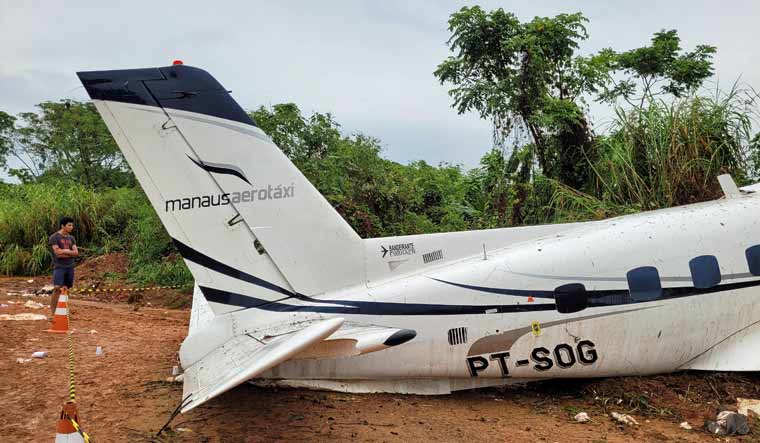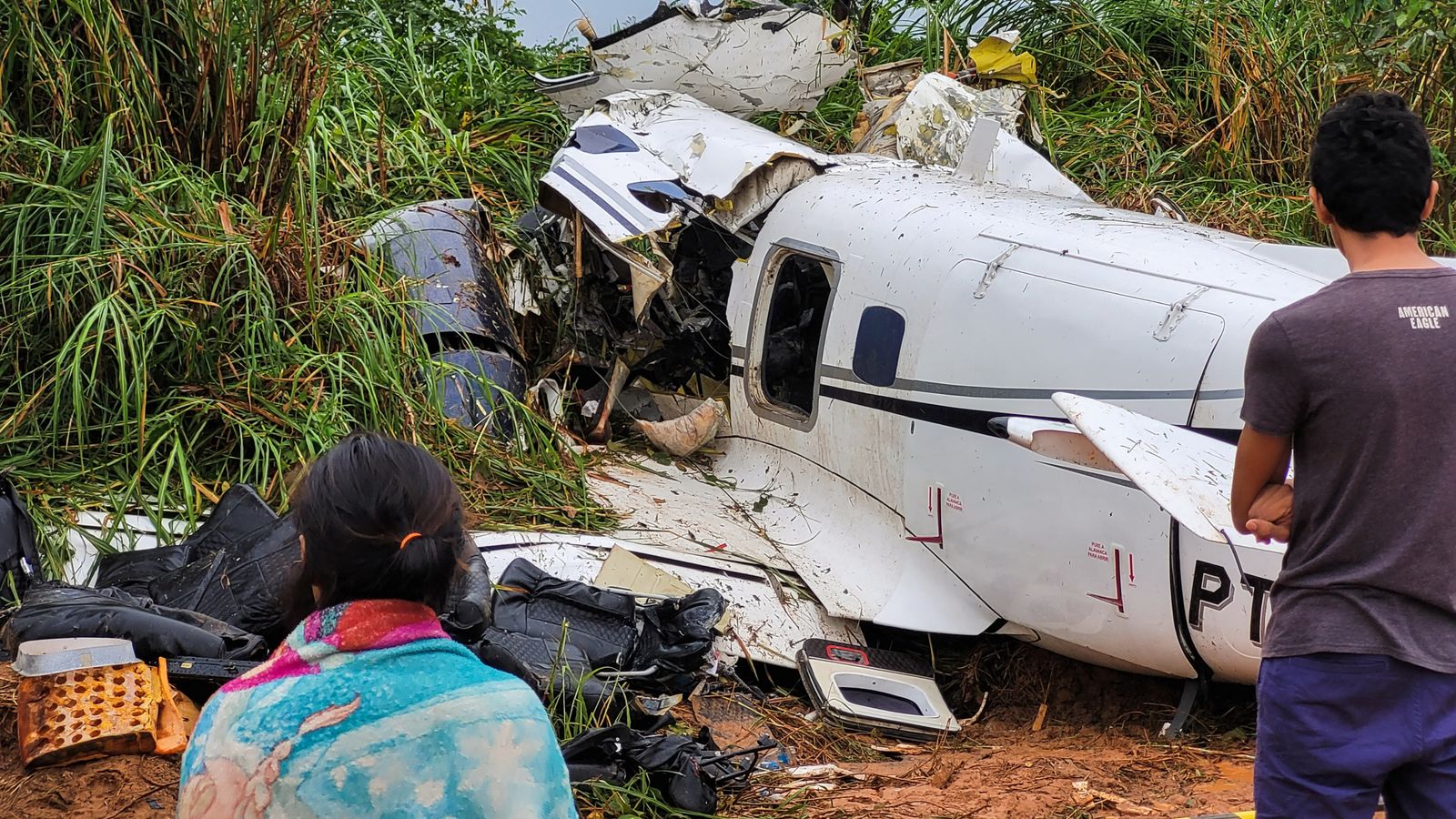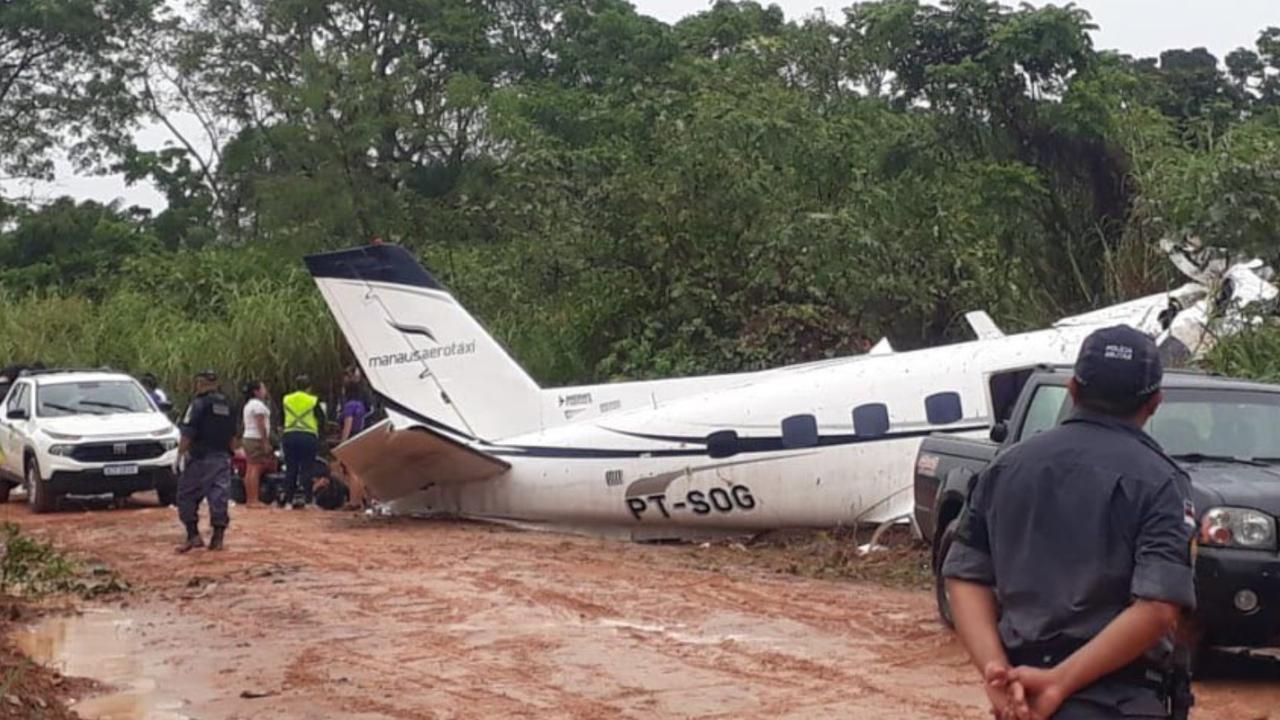Historical Context of Brazilian Aviation Accidents

Brazil, with its vast geographic expanse and growing aviation industry, has unfortunately witnessed a history marked by significant aviation accidents. These incidents have not only resulted in tragic loss of life but have also raised critical questions about safety standards, infrastructure, and technological advancements within the country’s aviation sector.
Major Aviation Accidents in Brazil
Brazil flight crash – Throughout the history of Brazilian aviation, several major accidents have left a lasting impact. Some notable examples include:
- 1973 Varig Flight 837 Crash: This accident, involving a Boeing 707 near Paris, France, claimed the lives of 117 passengers and crew. The investigation attributed the crash to a fire in the cargo hold, highlighting the importance of cargo safety regulations.
- 1982 TAM Airlines Flight 352 Crash: This tragic event occurred in São Paulo, Brazil, when a Boeing 737 crashed into a crowded residential area, killing 99 people. The investigation revealed that the aircraft’s engines failed due to bird strikes, emphasizing the need for bird strike mitigation measures at airports.
- 1989 Gol Transportes Aéreos Flight 1907 Crash: This collision in mid-air between a Boeing 737 and an Embraer Legacy 600 over the Amazon rainforest resulted in the deaths of all 154 passengers and crew on the Gol flight. The accident highlighted the importance of air traffic control systems and the need for collision avoidance technologies.
- 2007 TAM Airlines Flight 3054 Crash: This accident, involving an Airbus A320 at São Paulo’s Congonhas Airport, resulted in the deaths of 199 people. The investigation found that the aircraft had landed short of the runway, highlighting the need for improved runway safety measures and pilot training.
Factors Contributing to Aviation Accidents
Several factors have contributed to the occurrence of aviation accidents in Brazil, including:
- Safety Regulations: While Brazil has implemented safety regulations, their enforcement and effectiveness have been subject to scrutiny. There have been concerns about the adequacy of oversight and the need for stricter adherence to international safety standards.
- Infrastructure: The rapid growth of Brazil’s aviation industry has placed a strain on its infrastructure, including airports, air traffic control systems, and maintenance facilities. In some cases, infrastructure limitations have been identified as contributing factors to accidents.
- Technological Advancements: While technological advancements have improved aviation safety, the adoption and implementation of these technologies in Brazil have not always been consistent. There have been delays in implementing new technologies, such as collision avoidance systems, which have contributed to accidents.
Historical Trends in Aviation Accidents
Analyzing historical trends in aviation accidents in Brazil reveals a complex picture. While there have been improvements in safety over time, the country’s accident rate has historically been higher than the global average. This discrepancy highlights the need for continuous efforts to improve safety standards and address the factors contributing to accidents.
The Brazil flight crash was a tragic event that shook the nation. It’s a reminder that even in the face of tragedy, we must continue to learn and grow. The sept 10 debate provides a valuable historical perspective on the importance of safety protocols and the need for constant vigilance.
As we reflect on the Brazil flight crash, let’s also remember the lessons learned from the past and strive for a safer future.
Comparison to Global Aviation Safety Standards
Comparing Brazil’s aviation safety record to global standards reveals areas where improvement is needed. While the country has made progress in implementing safety regulations and enhancing infrastructure, it still faces challenges in achieving the same level of safety as other developed aviation markets. The International Civil Aviation Organization (ICAO) sets global standards for aviation safety, and Brazil has been working to align its regulations with these standards. However, there remains a gap in implementation and enforcement, which contributes to the higher accident rate.
The news of the Brazil flight crash is deeply tragic, and our thoughts are with the victims and their families. It’s a reminder of the fragility of life, and how quickly things can change. In light of such events, it’s important to stay informed about current events, like what time is the presidential debate.
This kind of dialogue and political discourse can help us navigate the challenges we face as a society, and find ways to move forward together.
Investigating the Specific Flight Crash

This section will delve into the details of a specific Brazilian flight crash, examining the circumstances surrounding the event, the findings of the official investigation, and the recommendations made to prevent similar tragedies.
Flight Details and Circumstances
The flight in question was TAM Airlines Flight 3054, a Boeing 737-800, operating a domestic route from Porto Alegre to São Paulo-Congonhas Airport. The crash occurred on July 17, 2007, at 18:50 local time.
The weather conditions at the time of the crash were reported as clear, with no significant wind or turbulence. However, the runway at Congonhas Airport was known to be short and narrow, with a history of accidents. The pilot, experienced with over 10,000 flight hours, had a clean safety record.
The official investigation, conducted by the Brazilian Center for Investigation and Prevention of Aeronautical Accidents (CENIPA), concluded that the crash was caused by a combination of factors, including the pilot’s failure to maintain adequate control of the aircraft during landing, the aircraft’s landing gear not being properly deployed, and the short runway length. The investigation also revealed that the pilot had received training on the airport’s procedures and the importance of maintaining control of the aircraft during landing.
Official Investigation Findings and Recommendations
The CENIPA report detailed several key findings and recommendations.
- The pilot’s actions during the landing were deemed to be the primary cause of the crash. The pilot had failed to maintain control of the aircraft during the landing, which led to the aircraft overshooting the runway and colliding with a fuel truck and a hangar.
- The investigation also found that the aircraft’s landing gear was not properly deployed, which contributed to the crash. The report stated that the landing gear was not properly deployed due to a malfunction in the landing gear system.
- The investigation also highlighted the short length of the runway at Congonhas Airport as a contributing factor to the crash. The report stated that the short runway length made it difficult for pilots to maintain control of the aircraft during landing, especially in conditions of high winds or turbulence.
The CENIPA report made several recommendations to prevent similar accidents from occurring in the future.
- The report recommended that pilots be given additional training on the procedures for landing at Congonhas Airport, including the importance of maintaining control of the aircraft during landing.
- The report also recommended that the landing gear system on the Boeing 737-800 be inspected and maintained regularly to ensure that it is functioning properly.
- The report recommended that the runway at Congonhas Airport be lengthened to provide pilots with more room to maneuver during landing.
Impact of the Crash and Subsequent Changes
The TAM Airlines Flight 3054 crash was a major tragedy, resulting in the deaths of 199 people. The crash had a significant impact on Brazilian aviation, leading to a number of changes in safety regulations and procedures. These changes included:
- Increased safety regulations for pilots, including more rigorous training requirements and stricter standards for flight experience.
- Improved safety standards for aircraft maintenance and inspections, including more frequent inspections of landing gear systems.
- Increased awareness of the importance of runway length and safety procedures for landing at Congonhas Airport.
Impact and Aftermath of the Crash: Brazil Flight Crash
The crash of a Brazilian aircraft, especially a commercial flight, is a devastating event with far-reaching consequences. The immediate aftermath is marked by grief, shock, and a scramble to understand the cause and extent of the tragedy. This section delves into the impact and lasting effects of such an event, examining the human toll, the ripple effects on the aviation industry, and the response to support the victims and their families.
Casualties and Damage
The immediate and most tragic consequence of a plane crash is the loss of life. The number of casualties varies greatly depending on the size of the aircraft, the circumstances of the crash, and the location of the incident. The crash site itself is often a scene of devastation, with the wreckage of the aircraft and potentially other damaged property. Rescue efforts are paramount in the immediate aftermath, with emergency responders working tirelessly to search for survivors and provide medical assistance to the injured. The scale of the disaster is often a defining factor in the public’s perception of the event, with major crashes receiving significant media attention and sparking public outcry.
Public Reaction and Media Coverage
The public reaction to a plane crash is often a mixture of shock, grief, and anger. The news of a crash is often met with disbelief and a sense of vulnerability, as the incident reminds people of the inherent risks associated with air travel. Media coverage plays a significant role in shaping public perception, with news outlets often reporting extensively on the crash, providing updates on the investigation, and offering condolences to the victims’ families. The media’s role in covering these events can be both informative and emotionally charged, with the potential to influence public opinion and policy decisions.
Impact on the Aviation Industry, Brazil flight crash
The impact of a plane crash on the aviation industry can be profound, affecting safety protocols, passenger confidence, and airline operations.
- Safety Protocols: Following a major crash, aviation authorities often conduct thorough investigations to determine the cause of the accident. This investigation can lead to changes in safety protocols, regulations, and industry standards. These changes aim to prevent similar accidents from occurring in the future, focusing on areas such as aircraft maintenance, pilot training, and air traffic control.
- Passenger Confidence: A plane crash can erode passenger confidence in the safety of air travel. This decline in confidence can lead to a decrease in air travel demand, potentially impacting airline revenue and profitability. Airlines often respond to such incidents by emphasizing their safety record, implementing new safety measures, and offering reassurance to passengers.
- Airline Operations: A plane crash can also have a significant impact on the operations of the affected airline. The airline may face legal proceedings, financial losses, and reputational damage. In addition, the airline may have to deal with the emotional and logistical challenges of supporting the victims’ families, including providing compensation and counseling.
Support for Victims and Families
In the aftermath of a plane crash, support for the victims and their families is crucial. This support can take many forms, including:
- Financial Assistance: Many governments and airlines provide financial assistance to the families of crash victims. This assistance may include compensation for lost wages, funeral expenses, and other financial losses.
- Psychological Counseling: The emotional trauma of a plane crash can be overwhelming for survivors and families. Psychological counseling is often provided to help individuals cope with the grief, shock, and anxiety associated with the event.
- Legal Proceedings: Families of crash victims may pursue legal action against the airline, aircraft manufacturer, or other parties involved in the accident. Legal proceedings can be complex and time-consuming, but they can provide families with compensation and accountability for the loss of their loved ones.

